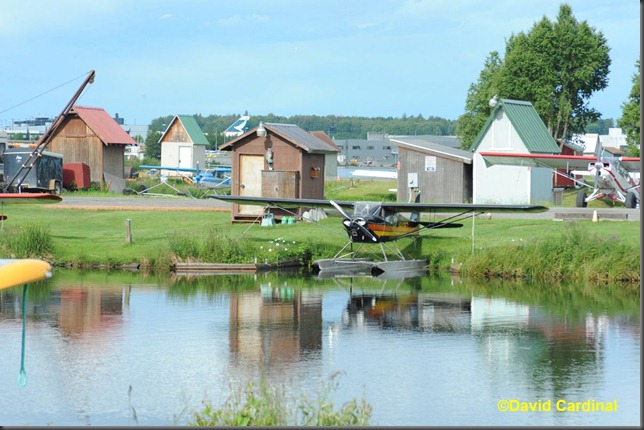- Photo Safaris
- Alaska Bears & Puffins World's best Alaskan Coastal Brown Bear photo experience. Small group size, idyllic location, deluxe lodging, and Puffins!
- Participant Guestbook & Testimonials Candid Feedback from our participants over the years from our photo safaris, tours and workshops. We don't think there is any better way to evaluate a possible trip or workshop than to find out what others thought.
- Custom Photo Tours, Safaris and Personal Instruction Over the years we've found that many of our clients & friends want to participate in one of our trips but the dates we've scheduled just don't work for them or they'd like a customized trip for their family or friends.
- Myanmar (Burma) Photo Tour Myanmar (Burma) Photo Tour December 2017 -- with Angkor Wat option
- Reviews Go hands-on
- Camera Reviews Hands-on with our favorite cameras
- Lens reviews Lenses tested
- Photo Accessories Reviews Reviews of useful Photo and Camera Accessories of interest to our readers
- Useful Tools & Gadgets Handy tools and gadgets we've found useful or essential in our work and want to share with you.
- What's In My Camera Bag The gear David Cardinal shoots with in the field and recommends, including bags and tools, and why
- Articles About photography
- Getting Started Some photography basics
- Travel photography lesson 1: Learning your camera Top skills you should learn before heading off on a trip
- Choosing a Colorspace Picking the right colorspace is essential for a proper workflow. We walk you through your options.
- Understanding Dynamic Range Understanding Dynamic Range
- Landscape Photography Tips from Yosemite Landscape Photography, It's All About Contrast
- Introduction to Shooting Raw Introduction to Raw Files and Raw Conversion by Dave Ryan
- Using Curves by Mike Russell Using Curves
- Copyright Registration Made Easy Copyright Registration Made Easy
- Guide to Image Resizing A Photographers' Guide to Image Resizing
- CCD Cleaning by Moose Peterson CCD Cleaning by Moose Peterson
- Profiling Your Printer Profiling Your Printer
- White Balance by Moose Peterson White Balance -- Are You RGB Savvy by Moose Peterson
- Photo Tips and Techniques Quick tips and pro tricks and techniques to rapidly improve your photography
- News Photo industry and related news and reviews from around the Internet, including from dpreview and CNET
- Getting Started Some photography basics
- Resources On the web
- My Camera Bag--What I Shoot With and Why The photo gear, travel equipment, clothing, bags and accessories that I shoot with and use and why.
- Datacolor Experts Blog Color gurus, including our own David Cardinal
- Amazon Affiliate Purchases made through this link help support our site and cost you absolutely nothing. Give it a try!
- Forums User to user
- Think Tank Photo Bags Intelligently designed photo bags that I love & rely on!
- Rent Lenses & Cameras Borrowlenses does a great job of providing timely services at a great price.
- Travel Insurance With the high cost of trips and possibility of medical issues abroad trip insurance is a must for peace of mind for overseas trips in particular.
- Moose Peterson's Site There isn't much that Moose doesn't know about nature and wildlife photography. You can't learn from anyone better.
- Journeys Unforgettable Africa Journeys Unforgettable -- Awesome African safari organizers. Let them know we sent you!
- Agoda International discounted hotel booking through Agoda
- Cardinal Photo Products on Zazzle A fun selection of great gift products made from a few of our favorite images.
- David Tobie's Gallery Innovative & creative art from the guy who knows more about color than nearly anyone else
- Galleries Our favorite images
Breakthrough Teleconverter for Consumer Lenses: Kenko Teleplus Pro 300 DGX 1.4x
Breakthrough Teleconverter for Consumer Lenses: Kenko Teleplus Pro 300 DGX 1.4x
Submitted by David Cardinal on Thu, 07/08/2010 - 16:02
Few questions from safari participants make me cringe as much as the one about using a Teleconverter with their consumer or prosumer lenses. Both Nikon and Canon have worked hard on excellent Teleconverters for their high-end pro Telephoto lenses, but for some good reasons have orphaned their other lenses in that regard. Solutions were all ugly, involving a loss of Auto-Focus and often physical modifications to lenses. But now all that has changed with the introduction of the …
Before I sing some of the praises of the new Kenko DGX converters I want to state a couple massive caveats up front. First and foremost, consumer and prosumer lenses aren’t built with the ultra-sharp optics required to get tack sharp images with a Teleconverter. So there is going to be some loss of sharpness with any Teleconverter for those lenses. But in many cases the tradeoff may be worth it if it is the only cost effective way you can reach the focal length you need.
And second, even though the new Kenko TCs amazingly support AutoFocus (at least in the configurations I tested it) like any Teleconverter it will reduce the available light (by 1 stop for a 1.4x) so you’re not going to get blazingly fast AF by the time you take a relatively slow consumer lens and drop another stop of light. Any teleconverter, especially on a less expensive lens, is not a substitute for a larger, longer, and more expensive dedicated lens--but it's certainly a lot less expensive and can be a lot more convenient.
All that said, the Kenko Teleplus Pro 300 1.4x DGX TC for Nikon and Kenko Teleplus Pro 300 1.4x DGX TC for Canon are pretty impressive. The very first welcome surprise is that it mated perfectly with the Nikon and Sigma lenses I tried without any of the hacking and filing that is needed to get the Nikon Teleconverters to mount to them. It went on smoothly and appeared to lock nicely. Like other Kenko products I wouldn’t compare the build quality to a similar Nikon product. It is less than half the price and some of that cost savings is from a slightly less elegant and robust build. But it was solid and seems like it will hold up well.

This image shows a park sign at f/8 with the Nikon 24-120 (VR version) and the new Kenko 1.4TC. The 24-120 is an “okay” lens to start with and with the Teleconverter you can certainly see that the letters on the sign are not razor sharp, but they are remarkably good considering that we just increased our effective focal length from 120 to 170 for only $200. Note that the image is at f/8 so that the planes in the background are not razor sharp partially because of focus, independent of the sharpness of the lens and converter.
Below is a landscape scene to give you a sense of the images which are possible with a standard consumer lens and the Teleconverter.
The newest version of the Teleconverters, the Kenko Teleplus Pro 300 1.4x DGX TC for Nikon and Kenko Teleplus Pro 300 1.4x DGX TC for Canon also have one other nice feature. It correctly reports the effective f-Stop of the combination of the lens and teleconverter—the older versions wouldn’t take into account the light reduction from the Teleconverter.
Another caveat about this type of teleconverter solution is I’d really hesitate to push it past 1.4x. More than that and the light loss and optical issues are going to pile up. With the 1.4x version I was very pleased that (as you can see above) there is virtually no light falloff in the corners, even on the full frame Nikon D700.
Now that I’ve taken the TC out for a spin with a standard consumer lens I’ll be experimenting using on my bear safaris with some of my Pro lenses to see if it makes sense as a less expensive alternative to the Nikon AF-S Teleconverters. It correctly mounts on my Pro AF-S lenses and does a good job of Auto-focusing, but next will come a test of image quality.
- Log in to post comments


